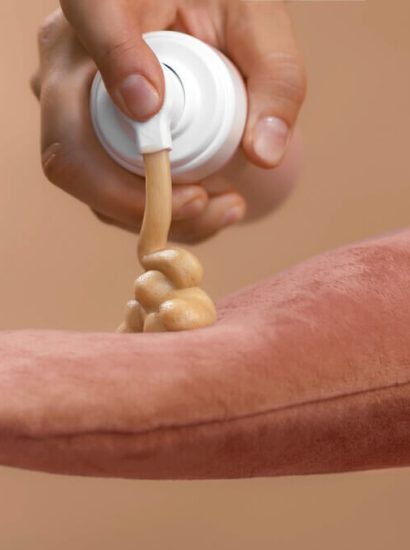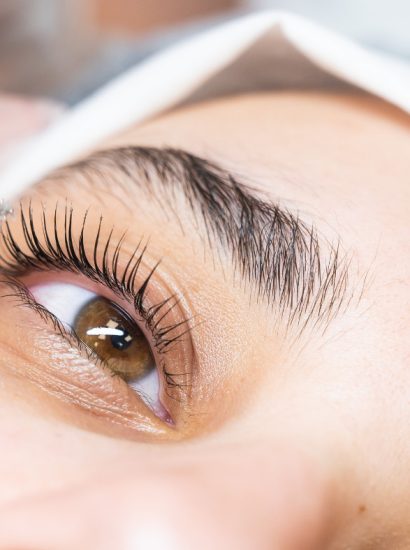Healthy nails are a significant indicator of overall well-being, Cuticle Oil and caring for them goes beyond the occasional manicure. One of the most effective products in achieving strong, healthy nails is cuticle-oil. This essential product is a must-have in any nail care routine, especially for those who frequently use their hands or regularly enjoy manicures. In this comprehensive guide, we’ll delve into everything you need to know about cuticle-oil, from its benefits and uses to how it fits into your daily routine.
1. What is Cuticle Oil?
Cuticle-oil is a specially formulated moisturizing product designed to nourish and protect the cuticles, the thin layer of skin surrounding the base of your nails. It typically contains a mixture of natural oils, vitamins, and sometimes essential oils that work together to keep your cuticles hydrated, preventing them from becoming dry, cracked, or infected. Common ingredients in cuticle oil include jojoba oil, vitamin E, almond oil, and sunflower oil, all of which provide deep hydration and nourishment.
2. Why is Cuticle-Oil Important?
Cuticle-oil plays a crucial role in nail health. The cuticles act as a barrier protecting the nails from bacteria and infections. When cuticles become dry or damaged, they can crack, peel, or develop hangnails, which can lead to more severe nail issues. Regularly applying cuticle-oil helps to maintain the cuticles’ integrity, promoting stronger and healthier nails. By keeping the cuticles soft and hydrated, cuticle oil also enhances the overall appearance of your nails, making them look polished and well-groomed.
3. Benefits of Using Cuticle-Oil
- There are numerous benefits to incorporating cuticle-oil into your nail care routine. Here are some of the key advantages:
- Hydration: Cuticle-oil provides essential moisture to the cuticles and nails, preventing them from drying out and becoming brittle.
- Nourishment: The vitamins and nutrients in cuticle-oil penetrate the skin, promoting healthy nail growth and strengthening the nails.
- Protection: Cuticle-oil forms a protective barrier on the skin, shielding the cuticles from environmental damage and bacteria.
- Healing: If your cuticles are already damaged, cuticle oil can help heal cracks, tears, and hangnails by softening the skin and reducing inflammation.
- Improved Nail Appearance: Regular use of cuticle-oil can lead to smoother, shinier, and healthier-looking nails.
4. How to Use Cuticle Oil
- Using cuticle-oil is simple and can easily be incorporated into your daily routine. Follow these steps for the best results:
- 1. Clean Your Nails: Start with clean, dry nails. Remove any nail polish or residue to ensure the oil can penetrate the cuticles effectively.
- 2. Apply the Oil: Using the dropper or brush applicator, apply a small amount of cuticle-oil directly to the base of each nail.
- 3. Massage In: Gently massage the oil into the cuticles and the surrounding skin using circular motions. This not only helps the oil absorb better but also stimulates blood circulation, which can promote nail growth.
- 4. Let It Absorb: Allow the oil to fully absorb into the skin. This may take a few minutes, but it’s important not to wash your hands immediately after application.
- 5. Repeat Regularly: For the best results, apply cuticle oil at least once a day, preferably before bed, so it can work overnight.
5. When Should You Use Cuticle-Oil?
Cuticle-oil can be used at any time of the day, but it’s particularly beneficial when used as part of your nighttime routine. Applying cuticle-oil before bed allows it to work uninterrupted while you sleep, leading to better absorption and more noticeable results by morning. You should also use cuticle-oil after washing your hands, after a shower, or whenever your nails feel dry. Additionally, applying cuticle-oil after a manicure helps to nourish the nails and prolong the life of your polish.
6. Choosing the Right Cuticle-Oil
- With so many cuticle-oils available on the market, choosing the right one can be overwhelming. Here are a few tips to help you select the best cuticle oil for your needs:
- Check the Ingredients: Look for cuticle-oils that contain natural oils like jojoba, almond, or coconut oil, as these are highly moisturizing and gentle on the skin.
- Consider Your Skin Type: If you have sensitive skin, opt for a cuticle-oil that is fragrance-free and contains soothing ingredients like vitamin E or aloe vera.
- Think About the Application: Cuticle-oils come in various forms, including droppers, brushes, and pens. Choose an application method that fits your lifestyle and is easy to use on the go.
- Price vs. Quality: While it’s tempting to go for the cheapest option, investing in a high-quality cuticle-oil can make a significant difference in your nail health. Look for well-reviewed products that are known for their effectiveness.
7. DIY Cuticle-Oil: How to Make Your Own
- If you prefer a more natural approach or want to save money, you can make your own cuticle-oil at home. Here’s a simple recipe:
- Ingredients:
- 1 tablespoon of jojoba oil
- 1 tablespoon of almond oil
- 1 teaspoon of vitamin E oil
- 3-4 drops of lavender essential oil (optional)
- Instructions:
- 1. Combine the jojoba oil, almond oil, and vitamin E oil in a small glass bottle.
- 2. Add the lavender essential oil if you prefer a scented oil.
- 3. Shake the bottle to mix the oils thoroughly.
- 4. Apply a few drops to your cuticles as needed.
- This DIY cuticle-oil is all-natural, cost-effective, and works just as well as store-bought options.
8. Myths About Cuticle-Oil
- Despite its benefits, there are several myths surrounding cuticle oil that can lead to confusion. Let’s debunk some of the most common misconceptions:
- Myth 1: Cuticle Oil Is Only for Dry Cuticles: While cuticle oil is great for dry cuticles, it’s also beneficial for overall nail health and should be used regularly, regardless of your cuticle condition.
- Myth 2: Any Oil Can Be Used as Cuticle-Oil: While some natural oils can be used on cuticles, not all oils are equally effective. Cuticle-oils are specifically formulated with a blend of oils that are most beneficial for nail health.
- Myth 3: Cuticle-Oil Will Make Your Nails Greasy: When used correctly, cuticle-oil should absorb quickly into the skin without leaving a greasy residue.
- Myth 4: Cuticle-Oil Isn’t Necessary If You Get Manicures: Even if you regularly visit the salon, applying cuticle-oil at home is essential for maintaining nail health between appointments.
- Myth 5: Cuticle-Oil Can’t Be Used on Acrylic Nails: Cuticle-oil is safe to use on all types of nails, including acrylics, gels, and natural nails.
9. How to Incorporate Cuticle Oil into Your Skincare Routine
- Adding cuticle-oil to your skincare routine is easy and can complement other self-care practices. Here’s how to integrate it:
- Morning Routine: After washing your face and applying moisturizer, massage a drop of cuticle-oil into each nail. This ensures your nails stay hydrated throughout the day.
- Evening Routine: Before bed, after applying your night cream, massage cuticle oil into your nails. This allows the oil to work overnight for maximum benefits.
- On-the-Go: Keep a small bottle of cuticle-oil in your bag and apply it whenever your nails feel dry or after hand washing.
- By consistently using cuticle-oil as part of your skincare routine, you’ll notice stronger, healthier nails over time.
10. Common Mistakes to Avoid When Using Cuticle Oil
- Even though cuticle-oil is straightforward to use, there are some common mistakes to avoid to ensure you get the most out of this product:
- Applying Too Much Oil: A little goes a long way. Applying too much oil can lead to greasy nails and slow absorption.
- Not Using It Regularly: Consistency is key. Sporadic use won’t provide the same benefits as daily application.
- Skipping the Massage: Massaging the oil into your cuticles helps with absorption and improves blood circulation, which can promote nail growth.
- Ignoring Other Nail Care Steps: While cuticle-oil is essential, it should be part of a comprehensive nail care routine that includes moisturizing your hands and avoiding harsh chemicals.
Conclusion
Cuticle-oil is a vital component of a healthy nail care routine. Its benefits go beyond just moisturizing the cuticles; it also protects, nourishes, and strengthens your nails, ensuring they remain healthy and beautiful. By understanding how to use cuticle-oil properly and incorporating it into your daily routine, you can enjoy stronger, healthier nails and cuticles. Whether you choose a high-quality store-bought option or a DIY recipe, regular use of cuticle-oil will lead to noticeable improvements in your nail health.
FAQs About
1. How often should I apply cuticle oil?
You should apply cuticle-oil at least once a day, preferably before bed, to allow the oil to work overnight.
2. Can I use cuticle-oil if I have nail polish on?
Yes, cuticle-oil can be used on polished nails. It won’t affect the polish and can help prolong the life of your manicure.
3. What is the best type of oil to use for cuticles?
Jojoba oil, almond oil, and vitamin E oil are some of the best oils for cuticles due to their hydrating and nourishing properties.
4. Can I use cuticle-oil on my toenails?
Absolutely! Cuticle oil is beneficial for both fingernails and toenails, helping to keep all your nails healthy and strong.
5. Is it possible to overuse cuticle oil?
While cuticle oil is generally safe to use, applying too much can lead to greasy nails. It’s best to use a small amount and let it absorb fully.
Also read : Omija: A Delicious Twist on Traditional Remedies





